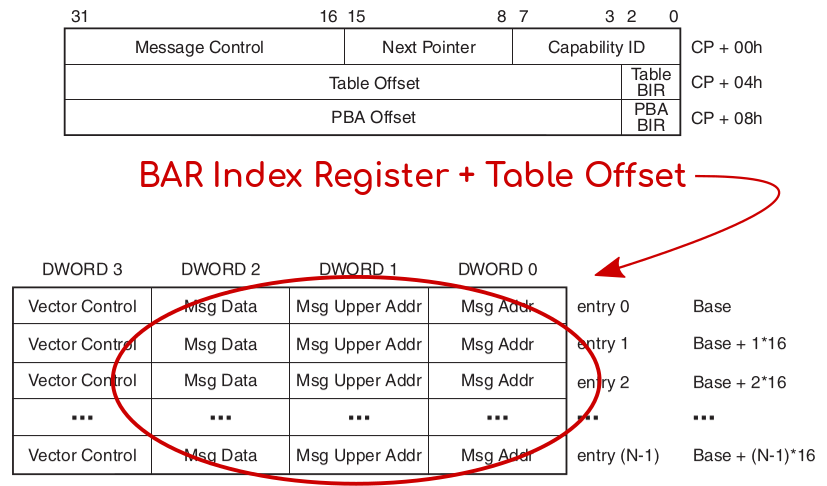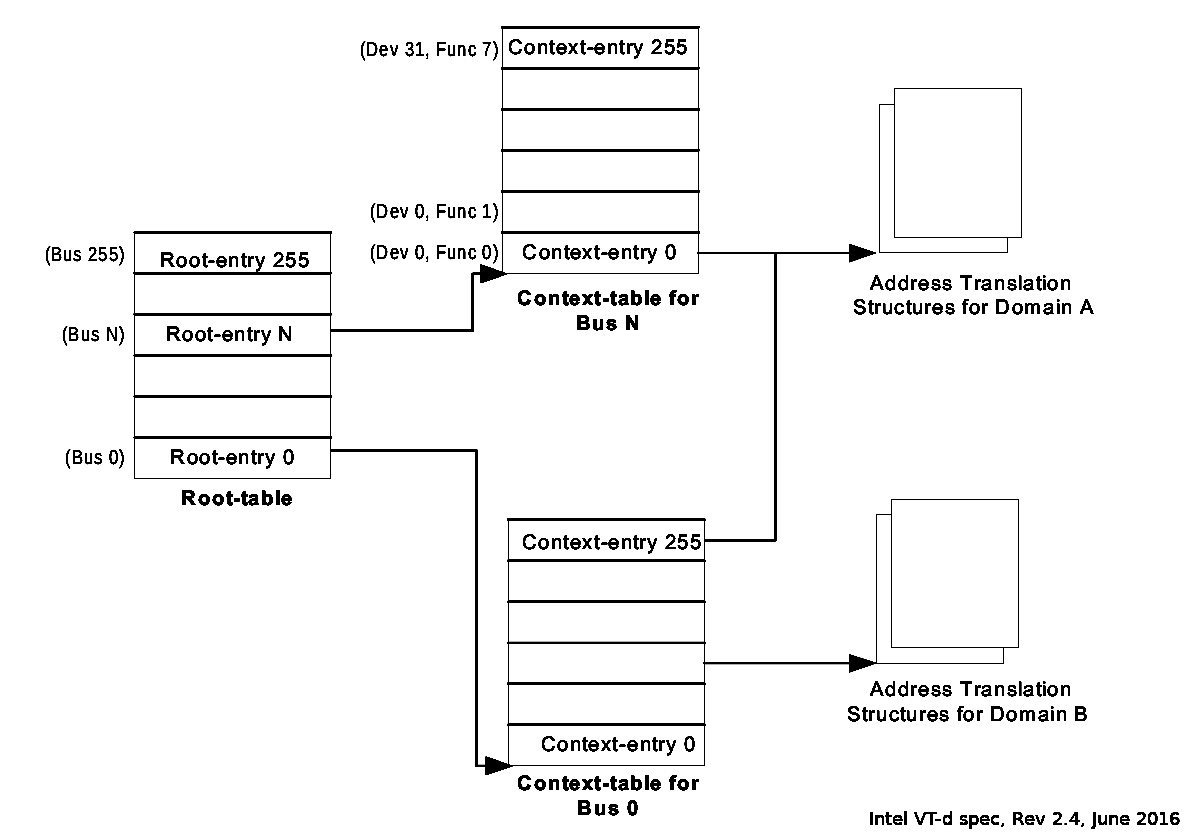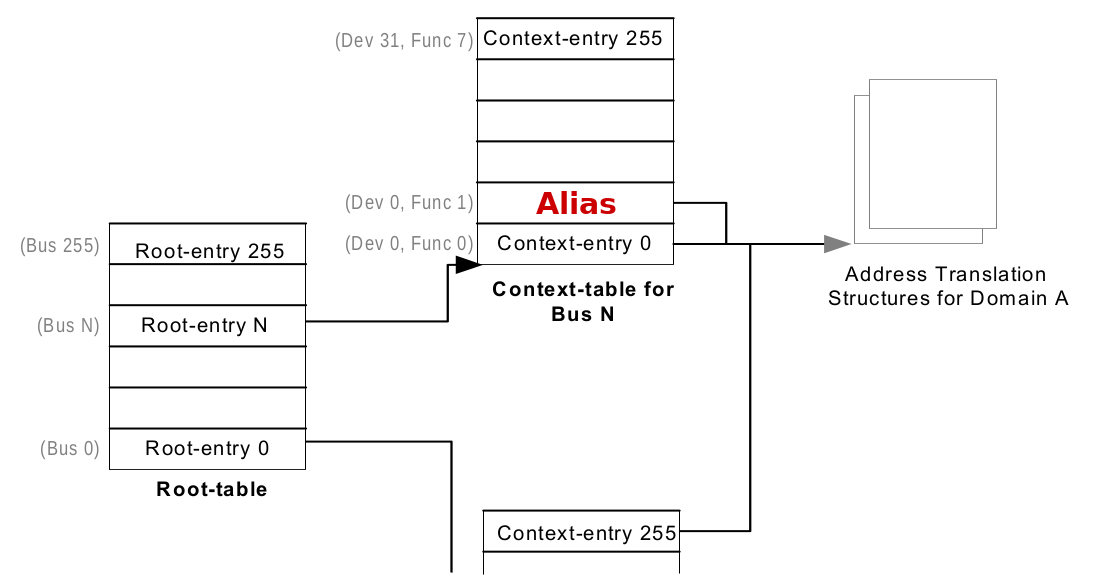


VFIO Device Assignment Quirks
...and how to avoid them in your hardware
Alex Williamson / alex.williamson@redhat.com
A quick VFIO refresher
VFIO: A userspace driver interface
Devices are decomposed into a userspace API
QEMU consumes the VFIO API
Recomposing the physical device to a virtual device
For further details:
KVM Forum 2016: "An Introduction to PCI Device Assignment with VFIO"
Device Assignment Requirements
Requirements
- Virtualization
- Identification
- Isolation
- Reproducibility
Virtualization
Requirement: Virtualization
- Hypervisor transposes device from host address space to VM address space
- IOMMU only accounts for DMA translation
- Virtualization required for:
- Mapping device MMIO and I/O port resources
- Translating interrupt address spaces
- Topology translations
- External dependencies
PCI Resource Mapping

PCI BARs
- Describes resource type and features
- MMIO vs I/O port, 32-bit, caching, etc
- Exposes resource size
- Locates resources within address space…
User cannot relocate physical resource,
BARs must be virtualized and mapped
into VM address space
PCI BAR Virtualization
- Pass-through type and feature bits
- Emulate BAR sizing interface
- Map resources into VM address space
- Host resource address remains static
Emulate the standard programming
model defined by PCI
Except…
Is PCI configuration space the only
way to access these registers?
Config Space Backdoors
- PCI defines the configuration address
space and register definition - Register implementation is not defined
- Implementations may expose configuration
space registers via multiple address spaces
Example Backdoors
- Config space mirrors in MMIO BAR spaces
- Window/data registers to config space
through I/O port BARs - VGA register hooks to BAR offsets
Result: PCI config space virtualization is not sufficient for all devices
Needed:
Infrastructure for virtualizing config space registers across all address spaces
Our first quirk…
VFIOQuirks
- QEMU-based quirks
- Infrastructure within VFIOPCIDevice
for handling device specific quirks - Helpers to facilitate common mirrors
and windows to PCI config space - Extensive use of MemoryRegions
- VFIOQuirks are sub-regions within
the default region mapping
Problem solved?
- KVM maps MMIO at PAGE_SIZE granularity
- Any quirk within an otherwise directly mapped
page traps the entire page through QEMU
What other registers reside within the page?
Case Study: NVIDIA
- MSI “ACK” required to retrigger interrupt
- MMIO write through BAR0 config mirror
- Increases MSI re-triggering latency
(partially addressed with ioeventfd handling)
But device resource mappings are not the only ranges needing virtualization…
Interrupt Address Space
Message Signaled Interrupts (MSI) trigger by writing pre-programmed data to a pre-programmed address

Both of these require address space virtualization
MSI is entirely configured through PCI configuration space, already virtualized…
MSI-X
Address/Data specified per vector within
MMIO BAR resident vector table

MSI-X Vector Table
- Resides within MMIO BAR
- Requires address space translation
- Opportunities for backdoors
- Page size virtualization granularity
- No performance critical registers within
same page as MSI-X structures - Some architectures use 64KB page size
MSI-X Vector Table Recommendations
- Use an exclusive BAR for MSI-X data structures
- Or, allow ample alignment of structures (64KB)
- For existing devices, “x-msix-relocation”:
- QEMU vfio-pci device option
- Modifies MSI-X capability to relocate to new BAR or extend existing BAR for alignment
Topology & Firmware Considerations
- Does the device driver depend on or assume
PCI capability presence or offsets? - Virtualization may change, move, or hide
- Does the device depend on other devices,
firmware tables, or reserved memory? - Intel IGD (GVT-d): All of the above!
- Integrated vs Discrete mindset
Lessons
- Avoid “backdoors” to PCI config space
- Use VFIOQuirks to fill virtualization gaps
- Be mindful of virtualization granularity
- Avoid external dependencies and
hardwired assumptions
Corollary: Assigned device config space accesses may be slower than bare metal
Identification
Requirement: Identification
- IOMMU hardware must be able to associate
each device to a translation context - Native PCIe devices use unique Requester ID
- Platform devices use Stream IDs or ACPI IDs
IOMMU context lookup by PCIe requester ID (bus:dev.fn)

What requester ID
does the IOMMU see?

Requester ID Issues
- Bus topology can create DMA aliases
- No requester ID on conventional PCI
- Requester ID failures:
- Shared requester IDs
- Ghost functions
pci_add_dma_alias()
- Linux kernel PCI quirk
- DMA aliases incorporated into IOMMU grouping
- Aliases to any device:fn on the same bus
- Context entries mapped for all aliases of device
DMA Alias

When to use this quirk
DMA requester ID does not strictly match the PCIe endpoint address
How to avoid this quirk
DMA requester ID must strictly match PCIe endpoint address initiating DMA transaction
IOMMU context entries evident from topology
Isolation
Requirement: Isolation
- Assigned devices must not interfere with or have access to memory except as explicitly allowed
- DMA isolation is provided through an IOMMU
- IOMMU granularity defines the minimum
isolation group - Device and bus topology features may
expand this IOMMU group
IOMMU Isolation
Topology Isolation: PCIe ACS
- PCIe Access Control Services (ACS) capabilities define upstream packet routing
- Without ACS packet redirection possible at:
- PCIe Downstream Ports
- PCIe Multifunction Endpoints
Hardware PCIe ACS Support
- Many PCIe downstream ports lack ACS
- Many PCIe multifunction endpoints lack ACS
- Some ACS implementations don't match the specification standard
IOMMU groups assume worst case routing
What quirks do we have in our toolbox for ACS isolation issues?
pci_dev_specific_acs_enabled()
- Linux kernel PCI quirk
- Allows ACS equivalent isolation to be exposed
- Hardware vendor guarantees hardware behavior
- Used by downstream ports and multifunction endpoints (many vendors, many devices)
pci_dev_specific_enable_acs()
- Linux kernel PCI quirk
- Device specific setup of ACS equivalent isolation
- Often used in conjunction with pci_dev_specific_acs_enabled()
When to use these quirks
- PCIe downstream port or multifunction endpoint with broken or missing ACS
- Hardware vendor guarantees ACS equivalent routing features
How to avoid these quirks
Reproducibility
Requirement: Reproducibility
- Method to put a device into a consistent state
- Prevents data leakage between users
How do we put a device into a consistent state for reproducible device assignment results?
PCI Resets
- Function Level Reset (FLR)
- PCIe & AF capabilities
- Hotplug Slot & Secondary Bus Reset
- Power Management (PM) capability reset
Reset Problems
- Bus & Slot reset scope
- Scarce FLR support outside of SR-IOV VFs
- Poorly defined PM reset
- Reset incompatibility...
- Endpoints fail to recover from bus reset
- Downstream ports fail during bus reset
- Resets may be ineffective
- Lack of any reset mechanism
Quirks
pci_dev_specific_reset()
- Linux kernel PCI quirk
- Override or implement PCI endpoint reset
- Few users
- Requires device specific knowledge
PCI_DEV_FLAGS_NO_BUS_RESET
- Linux kernel PCI quirk
- Flag in struct pci_dev set via FIXUP quirk
- Available for endpoints and downstream ports
- No secondary bus reset from downstream port
- No bus resets inclusive of endpoints with flag
- Tool of last resort
- Often eliminates only reset option
VFIOPCIDevice.resetfn
- QEMU vfio-pci device specific reset quirk
- “Second class” reset
- Not sufficiently reliable/stable for kernel implementation
How to Avoid Reset Quirks
Implement FLR
Minimally: Test both endpoints and downstream ports with secondary bus resets
Summary
- Be mindful of device assignment
requirements in hardware - Avoid config space backdoors
- Note alignment recommendations
- Avoid topology and firmware
dependencies & requirements - Test hardware with IOMMU enabled
- Provide isolation and reset mechanisms
Questions?
Alex Williamson / alex.williamson@redhat.com
